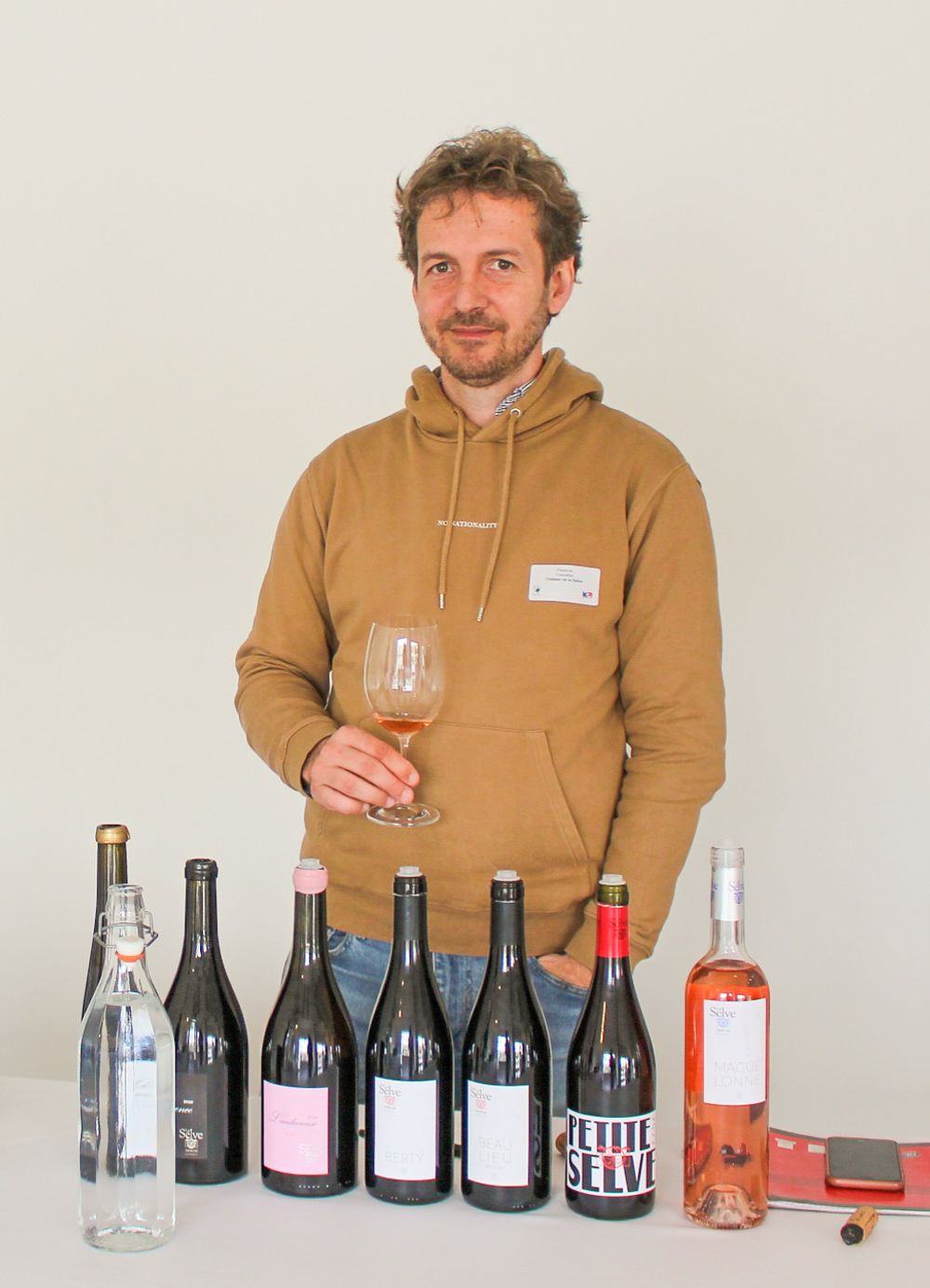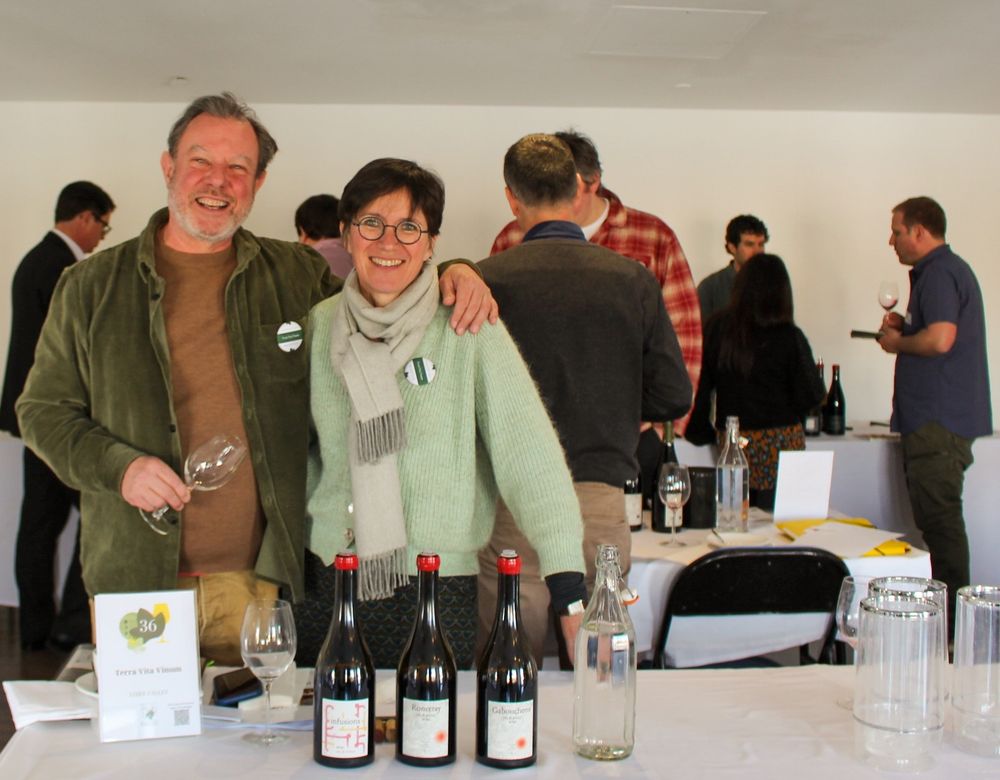“Really lovely to try exciting wines from a still comparatively unknown region,” writes McCleery from the Biodyvin tasting.

Biodyvin 2023 tasting, London, April 2023
Established in 1995, Biodyvin (Syndicat International des Vignerons en Culture Bio-Dynamique), is today 205-members strong, with some 5200 hectares of vineyards between them. Though mainly in France, the union also has certified estates in Belgium, Germany, Greece, Italy, Portugal, Spain, and Switzerland.
Biodyvin’s president is none other than Olivier Humbrecht, France’s first Master of Wine and owner of Domaine Zind-Humbrecht. In explaining SIVCBD’s philosophy Humbrecht says, “it is important that our members are making saleable wines, which customers will enjoy … this is why we taste the wines for properties that apply for membership … and why we try and be pragmatic about the winemaking and interventions the winemaker may make.”
What this means is that, while the syndicate expects members to avoid the use of products like organic cane sugar and commercial yeasts in vinification, because of the distorting impact they have on the wine, there is also acceptance that there is sometimes need for winemakers to revert to such resource. It is a requirement of all members that, when they do so, they must also “conduct experiments and comparisons to justify their choice, and to try to develop alternative techniques so they can gradually minimise their use.”
In the vineyard, there are more exacting criteria. Each member must use preparations 500, 501, and on to and including 507, as well as MT compost. 500 is horn manure, used for soil health. 501 is horn silica, supporting the vine’s immunity and strengthening photosynthesis. 502 to 507 are yarrow, chamomile, stinging nettle, oak bark, dandelion and valerian respectively. These are nature’s herbal medicines, supporting microbial activity and stabilising nitrogen.
Helpfully, Biodyvin makes a two-day course on biodynamic viniculture a compulsory part of membership. It also specifies, in its articles of association, when the treatments must be applied in the vineyard.
Biodyvin has established links with Ecocert, which controls adherence to the union’s criteria, and is ultimately the certifying organisation.
In its own words, “SIVCBD’s members apply biodynamic practices in order to preserve the fertility of the soil, to allow the vines to flourish in a well-preserved terroir, to let animal and plant life resume its place in the vineyard, and to protect the environment; in this way the wines produced are able to give full expression to the terroir and their quality is optimised.”
Highlights of the Biodyvin tasting in London
With almost 50 properties represented at the event, from across France (and an Italian ‘interloper’ too!), Biodyvin’s 2023 London tasting was well-attended and had an impressive buzz, despite the Easter week date.
I tasted a good number of attractive wines. Here’s a trio of estates that gave me a lot of drinking pleasure.

Benoît Chazallon from Château de la Selve
Château de la Selve is an Ardèche property, owned and managed by the beamingly enthusiastic Benoît Chazallon, who talks a little as though he’s trying to outrun the Mistral winds, he’s chatting about. Vineyards planted on clay-limestone soils from the Cretaceous era, somehow thrive in the blistering summer heat. The winds and cool nights offer much needed reprieve.
I was charmed by the breezily fresh and super fruity IGP Coteaux de l’Ardèche Petite Selve Rouge 2021. A blend of 40% Cinsault, 40% Grenache and 20% Syrah is fermented for 20 days, before being aged on the lees in concrete tanks. Berty 2020 is made from fruit grown on a hillside (it’s all relative in this part of the region, being 117 to 135m above sea level) plot called Serre de Berty. Syrah, Grenache and Cinsault have a long fermentation, the wine is aged for up to two years in oak and amphora. Bold and richly flavoured, it’s the supple tannins in the wine that make it stand out. Really lovely to try exciting wines from a still comparatively unknown region. (Seeking distribution in the UK).

Fabien Jouves from Mas Del Périé
Mas Del Périé is the Cahors property of Fabien Jouves, with treasured vineyards on some of the appellation’s highest slopes. This is a deep dive into Malbec, Périé’s “king grape variety”. Each of the half dozen wines I tasted are a single-vineyard expression of Malbec, with ageing in concrete or oak vats, depending on the plot. There’s a Malbec for everyone here and I was wow-ed by the brilliantly articulate individuality of each wine. I can see why they’re on-trade favourites, having a clear gastro quality. That said, I hope they find independent representation – it would be very cool for more of us to have the chance to savour these wines at home.
La Roque 2022 is from 35-year-old vines, planted on Miocene brown marl soils, at 350m above sea level. I was deeply taken by the crunchy freshness of this, the red and blue hedgerow fruit just singing from start to finish. Still a baby, Les Acacias 2021 is made with fruit from slightly older vines, planted in Ferruginous limestone soils at 350 metres above sea level. Fermented in concrete, the wine was aged in oak for 18 months. It’s clearly a more robust, structured Malbec and clearly with some distance to go. Still, fruit seeps generously onto the palate and tannic structure suggests greatness is to come. A fascinating tasting. (Imported and sold in the UK through Carte Blanche Wines).

Luc Briand and Bénédicte Petit of Terra Vita Vinum
Luc Briand and Bénédicte Petit of Terra Vita Vinum in the Loire Valley, made their first wine in 2019, having bought their 30-hectare estate in the same year. From the get-go, the focus has been on assiduous vineyard management, and to maximise their Anjou noir soils that are dark schist, gneiss, granite, and rhyolite rock.
Their endeavours might be recent, but the results are as impressive as those of reputed, long-standing winemakers. Whatever their previous lives, they seem born to viticulture and winemaking. There wasn’t a wine in their line-up of six that didn’t impress.
Infusions 2021 is a four-variety red Vin de France (I fear an admin error!), with 55% Cabernet Franc. It’s as fragrant a red that carries its partial barrel ageing very lightly indeed. Very drinkable, it’s more sophisticated than it perhaps first appears. Gabouchons 2021 is a cracking 100% Cabernet Franc from vineyards planted in black, grey-green, and purple schist rock. Whole-bunch maceration, and ageing for 12 months in a combination of concrete eggs, amphora, and oak barrels. My tasting note reads, “Brilliant! Loire Cabernet Franc at its absolute best. Bristles with energy, generously fruity, textured. Lip-smackingly good.”
The whites shone just as bright, but I fell furthest for their Bigottière Savennières 2020. The couple have an east-facing plot at the top of the Côte des Forges, on green sandstone schist. I couldn’t quite believe this was a no-added-sulphur white, aged for 26 months in demi-muid (73%), amphora and concrete eggs. Such a bright, pure, and clean wine – the palate having a strong lees-y quality, with white orchard fruit skin, baking apple and some dry spice too. Impressive vivacity. (Imported and sold in the UK by Robert Rolls & Co).
Hugely enjoyable and worthwhile tasting. I have two requests: do come again in 2024 and please, please provide a tasting book!










































